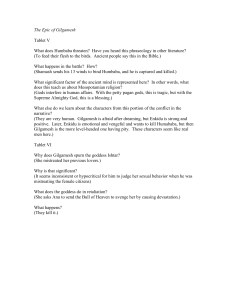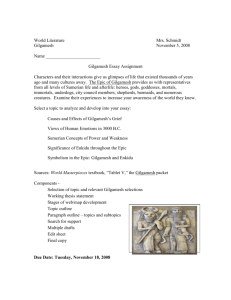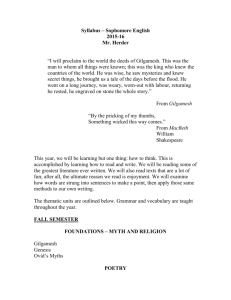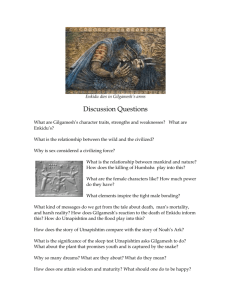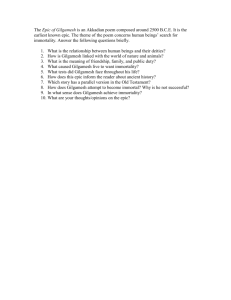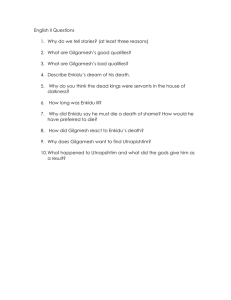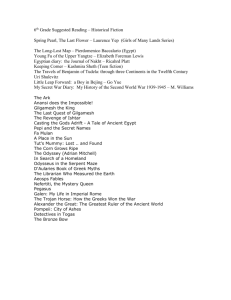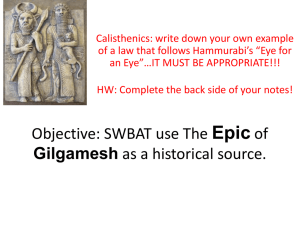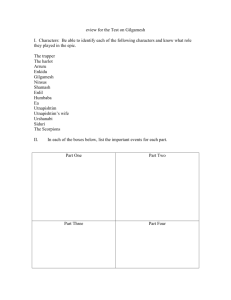Mythology Study Guide Chapter 16: Mesopotamia: The Epic of
advertisement
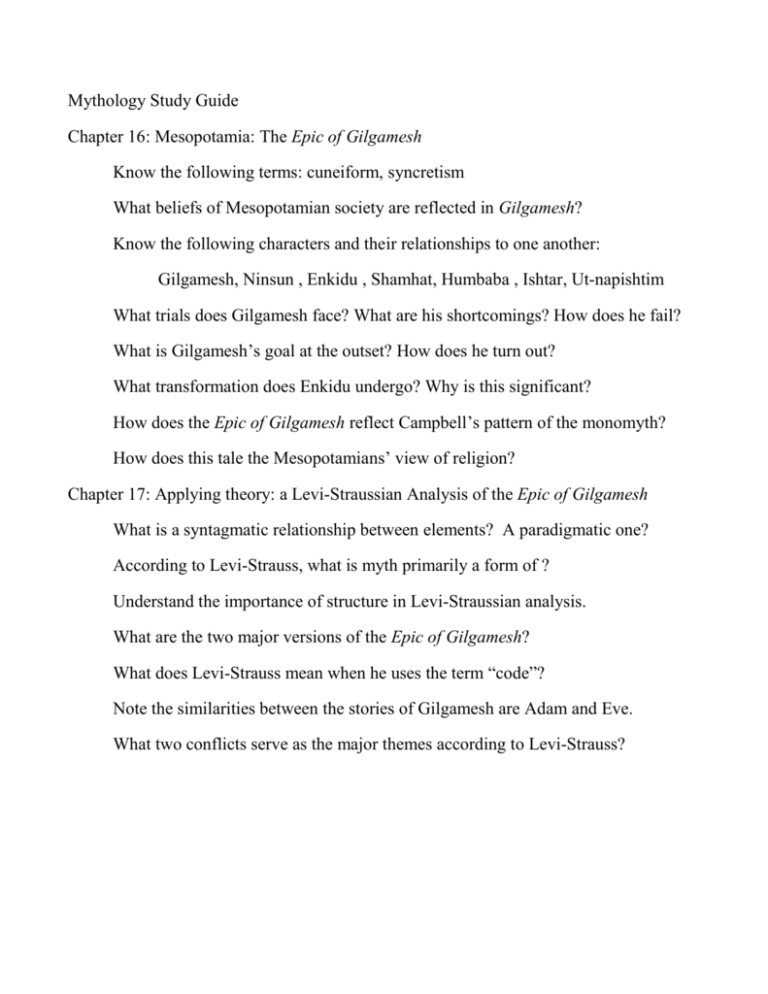
Mythology Study Guide Chapter 16: Mesopotamia: The Epic of Gilgamesh Know the following terms: cuneiform, syncretism What beliefs of Mesopotamian society are reflected in Gilgamesh? Know the following characters and their relationships to one another: Gilgamesh, Ninsun , Enkidu , Shamhat, Humbaba , Ishtar, Ut-napishtim What trials does Gilgamesh face? What are his shortcomings? How does he fail? What is Gilgamesh’s goal at the outset? How does he turn out? What transformation does Enkidu undergo? Why is this significant? How does the Epic of Gilgamesh reflect Campbell’s pattern of the monomyth? How does this tale the Mesopotamians’ view of religion? Chapter 17: Applying theory: a Levi-Straussian Analysis of the Epic of Gilgamesh What is a syntagmatic relationship between elements? A paradigmatic one? According to Levi-Strauss, what is myth primarily a form of ? Understand the importance of structure in Levi-Straussian analysis. What are the two major versions of the Epic of Gilgamesh? What does Levi-Strauss mean when he uses the term “code”? Note the similarities between the stories of Gilgamesh are Adam and Eve. What two conflicts serve as the major themes according to Levi-Strauss?
